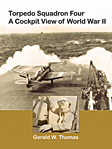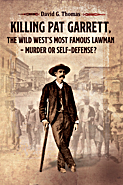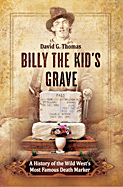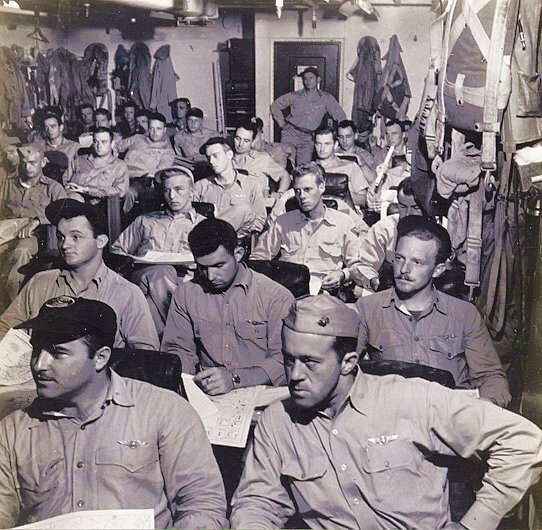|
|
||||||||||||||||||||||||
 |
||||||||||||||||||||||||
|
|
||||||||||||||||||||||||
|
||||||||||||||||||||||||
|
|
||||||||||||||||||||||||
 |
||||||||||||||||||||||||
 |
||||||||||||||||||||||||
 |
||||||||||||||||||||||||
|
|
||||||||||||||||||||||||
|
|||||||||||||||||||
|
My Military Recollections |
|||||||||||||||||||
|
By Major John W. LeBoeuf, VMF-213 |
|||||||||||||||||||
|
December – 1939 After three attempts, I was inducted into the US Navy. It was difficult to get into the Navy at that time. The recruiting office in Green Bay was accepting only one or two applicants each month. On the third attempt to join, I went with two friends, Art Vogel and Bob Hoffman. I made it, but they didn't. Later Art Vogel became a US Army glider pilot and Bob Hoffman became a pilot in the US Air Force. I was sent to Great Lakes, Illinois for boot camp training for the start of a six-year enlistment. April – 1940 I completed boot camp and was assigned to the Cruiser USS Philadelphia (CV41). This was to be my home away from home for the next 2 years, 4½ months. I was assigned to the supply department aboard ship. My battle station was with an anti-aircraft gun crew. Later I became crew chief. During my tenure aboard the Philadelphia, I was promoted 5 times from Apprentice Seaman to Seaman Second Class, to Seaman First Class, to Third Class Petty Officer, to Second Class Petty Officer and to First Class Petty Officer (Storekeeper). Interestingly, it was a rarity to see a First Class Petty Officer without at least 2 hashmarks (8 years of service). On numerous occasions I was stopped by the Shore Patrol and asked to show proof of my First Class Petty Officer Status. Shortly after boarding the Philadelphia in Long Beach, California we sailed for Hawaii, crossing the equator on the way. There was a ceremony (only in peace time) when the equator is crossed and I officially became a "shell back" as part of this ceremony. We continued on to Hawaii. Pearl Harbor became our homeport and we were to operate out of Hawaii with the Pacific Fleet until May of 1941. The Navy was starting to build up with more and more enlistments. The city of Honolulu was abundant with tattoo parlors and houses of prostitution. It was common to see sailors lined up for blocks waiting to get into these houses. More than once I resisted the urge to get tattooed. At sea, our time was spent on maneuvers, drills and gunnery practice. May – 1941 The Philadelphia left the Pacific Area and joined the Atlantic Fleet, passing through the Panama Canal on the way. We were assigned to provide convoy protection to ships carrying supplies to Great Britain. Unofficially we were not at war, but we detected German subs during our trips to Iceland and to Scotland. The convoys were very large and all the trips we made were successful. I enjoyed having liberty (time off) on both Rejavick, Iceland and in Scotland. I went through one old medieval castle in Glascow, Scotland. December 7, 1941 The Japanese bombed Pearl Harbor. This was a well-prepared sneak attack carried out while their envoys were in Washington discussing peaceful relations. President Franklin D. Roosevelt called Congress to session and war was declared against Japan and Germany. Our ship was anchored at Boston, Massachusetts at the time of the attack. Our ship continued in convoy duty until I left the Philadelphia in August of 1942. August – 1942 The Navy came out with a program where they were to take 100 enlisted personnel from the ranks for flight training. I applied for this training along with 15 others on our ship. Only 4 were recommended. Of the 4 that were recommended, I was the only one who received orders for flight training. Of the 4, I was the youngest and had the highest rating. I believe this was the only reason that I was selected. I was given a special order discharge from the regular Navy and transferred to the US Naval Reserve Cadet Program (V5). I took a cut in pay from $84 per month to $75 per month as a cadet. Incidentally, the pay scale in the Navy when I entered in 1939 was as follows: Apprentice Seaman $21/month, Seaman 2nd Class $30/month and Seaman 1st Class $54/month. Third Class Petty Officer $60/month, 2nd Class Petty Officer $72/month and 1st Class Petty Officer $84/month. My first assignment after receiving flight training was "Pre-Flight School" at the University of Georgia. This consisted of extreme physical training, (hikes, calisthenics, wrestling, football, boxing and trampoline), Judo and swimming. I received 3 black eyes during the 3-month course. Also, we had classroom exercises in weather, math, visual recognition tests of enemy planes and warships, Morse code, radio communication, etc. December – 1942 I was transferred to primary Flight School at the Naval Air Station at Olathe, Kansas and introduced to aircraft. I had a hard time learning how to taxi an aircraft, as I had never driven a car. (I logged over 400 flying hours before I learned to drive a car.) I was assigned an instructor and taught to fly. After I soloed, I had an accident involving a midair collision with another aircraft. February – 1943 While performing a maneuver which involved flying perfect figure 8´s around two large checkerboard painted pylons on the ground, I collided with another aircraft, hitting wings head-on. The area where this maneuver is performed is a restricted area. The maneuver is performed at an altitude of 600 feet. Anyone waiting to get into this area must circle at 800 feet altitude until the area is cleared. While doing the maneuver, visual contact is made with the pylon at all times while flying at a constant altitude, a constant airspeed and allowing for wind-drift, to fly perfect figure 8's. You keep your eyes on one pylon until you switch concentration to the alternate pylon. When the accident occurred, another pilot with a student was circling the area at 800 feet waiting for me to finish and leave the area. It was concluded that the third (crash) pilot (who was killed) was acrobating in the restricted area. I received a fractured skull upon impact. The plane rolled over. I opened the safety belt and was dropped out of the plane. The ripcord was pulled and I swung twice before I landed in stocking feet in a plowed Kansas cornfield. My boots kept on going when the chute opened. I saw a plane in the distance and I ran toward it to render help. As I got close, I saw that it was my own plane. I could not see the other plane. The plane that had been circling waiting for me to finish my maneuver landed to come to help. (It turned out that he was my instructor with another student.) He grabbed me and asked my name. My head and face were covered with so much blood that he didn't recognize me. He and the student took off their jackets and had me lie down. They flagged down a car on the highway, which went for assistance. An ambulance came; it got stuck in the mud. I helped push it out. I went into the hospital, went into shock and stayed for two weeks. While in the hospital, I got word that my mother was very ill and not expected to live. These were very bad times for me. My mother was only 43 years old. Upon returning to flying I immediately went back to the pylon area and did the figure 8 maneuver. This I had to do to see if it had effected my nerves. It was essential, I felt, if I was to become a combat pilot. May – 1943 to August – 1943 I completed my primary flight training and was transferred to the US Naval Air Station at Corpus Christi, Texas. I received a call while in a classroom that my Mother had passed away. I had wanted so much to pin my wings on her before she died. I completed advanced pilot training and received my wings and commission as a 2nd Lieutenant in the Marine Corps in August of 1943. About 3 months before being commissioned as a 2nd Lieutenant, I had the opportunity to select the Navy or the Marine Corps. The Marines take what they want of those that apply. I applied for the USMC and was accepted. August – 1943 to November – 1943 My first assignment after being commissioned was at the US Naval Air Station at Fort Lauderdale, Florida, flying torpedo bombers (TBMs). I completed this training and was transferred to the Pilot Pool in Santa Barbara, California. Shortly after arriving, we were advised that two new fighter squadrons would be forming at the Marine Corps Air Station in Mojave, California. I applied and was transferred to Marine Fighter Squadron VMF-213. November – 1943 to VJ Day, 1945 Marine Fighter Squadron VMF-213 was commanded by Major Donald Frame. We had a 44-pilot squadron with support personnel. Four veteran pilots who had been overseas with the original VMF-213 helped form the new squadron. They were Captain Wilbur "Gus" Thomas with 16½ kills (planes shot down), Captain Edward Shaw with 13½ kills, Captain Morgan with 8 kills, and 1st Lieutenant DiFabio with 3 kills. (Ironically, none of these, including Major Donald Frame, were to survive the war. These men were all excellent pilots.) The plane we flew was the Chance-Vought Corsair (F4U). I believe this to be the finest propeller airplane in World War II. We trained in the Mojave Desert until late 1944. Training involved gunnery with 50-caliber machine guns, dive bombing practice with live bombs and napalm, and rockets. We did extensive formation flying in very tight formations, doing acrobatic and evasive practice maneuvers. The camaraderie among this group of pilots was just great. In late 1944, our squadron and Marine Fighter Squadron 124 were moved to the Marine Corps Air Station in Eva, Hawaii, where we continued our training, but also included field carrier landings to qualify for actual carrier landings. All of our pilots qualified. In late December 1944, we received very disappointing news that VMF-124 and half of our squadron were to go aboard the USS Essex. Navy carrier squadrons were larger than the 44 pilots in our squadron (approximately 66 pilots). This meant breaking up our group of pilots. I was in the group that went aboard the Essex with VMF-124. The remainder of our group were to join us as replacements as needed. A lot of real good friends were left behind. (When the war was over, only 18 of the original 44 pilots came home.) |
|||||||||||||||||||
 |
|||||||||||||||||||
|
VMF-124 and VMF-213 in USS Essex Ready Room |
|||||||||||||||||||
|
We operated out of Ulithi Island from January through March of 1944, hitting enemy held islands and shipping in and out of Formosa, French Indo-China, Luzon in the Philippines, Hong Kong and Hanoi. In February and March we hit Tokyo, Okinawa and covered the landings at Iwo Jima. On the strikes on Tokyo, we went in at treetop level. Prior to this, only bombers had been going in at high altitude. Over Okinawa, the sky was black with anti-aircraft shells. I saw a few planes get hit. On one of the strikes over Tokyo, a shell exploded in the cockpit of my plane. I received minor face wounds (enough to draw a lot of blood) and a good-sized fragment in my right shoulder. The cockpit of my plane was filled with smoke and in my hurry to escape the area, I jammed the throttle forward too rapidly, and the engine choked. I eased the throttle back and then eased it forward slowly and the engine responded nicely and I headed out to sea to return to the carrier. I experienced a little apprehension in those moments until I was safely on my way back to the carrier. From intelligence reports, I was very familiar with what happened to downed pilots when captured by civilians. Fortunately my wounds were of a nature that I was awarded two Air Medals and a Purple Heart for my participation in these operations. We lost a lot of pilots (some very good friends). There were more losses from operation accidents and bad weather than from enemy action. Shortly after I left the ship to return back to the US, the Essex was a hit by a Kamikaze pilot and suffered considerable damage. Upon return to the US, I was assigned to the Ferry Command at Floyd Bennett Field in New York. My duties were ferrying combat aircraft from the East Coast to San Diego, California for shipment overseas. This was enjoyable duty. I was released from active duty in October of 1945 shortly after the Japanese surrender. 1952 In 1952, I was recalled to active duty during the Korean Conflict. I served 17 months until released from active duty in 1954. I was scheduled for overseas duty and sent to the West Coast for further transfer overseas. However, a cease-fire was declared and I returned home in 1954. Today At present I am a Major in the retired reserve of the United States Marine Corp. |
|||||||||||||||||||
|
Air Group 4 - "Casablanca to Tokyo" |
|||||||||||||||||||
|
|
|||||||||||||||||||